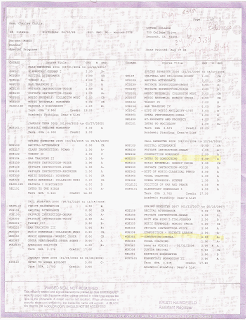



Name: Charles Moe
Competency: A1
Artifact Title: Baroque Phrasing Excerpts
Artifact Type: Excerpts from text on Baroque music phrasing by Weston H. Noble, professor emeritus at Luther College, Decorah, Iowa
Rationale for Inclusion: By reading these excerpts I have gained a better ability to identify and analyze representative musical forms, style and performance contexts, performance media and composers and compositions of western music. Musical performance practices differ depending on the period in which the music was written. These excerpts present just a few rules to be followed when performing music written during the Baroque period. Because so much choral music was written during this period it is inevitable that as a vocal music teacher I will be performing some of this music with my choir. Therefore it is important that the music be performed in the most accurate style possible. Not only that but the passing along of this information may prove useful to any of my students who plan on studying music in the future. This information can also be found in the book, Creating the Special World: A Collection of Lectures by Weston H. Noble edited by Steven M. Demorest and published by GIA publications Inc of Chicago.













































